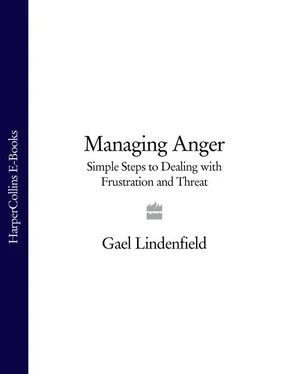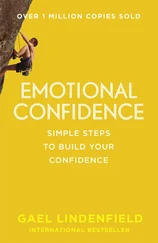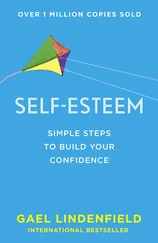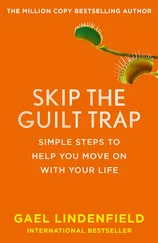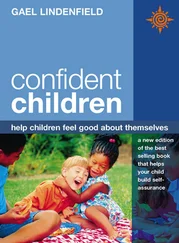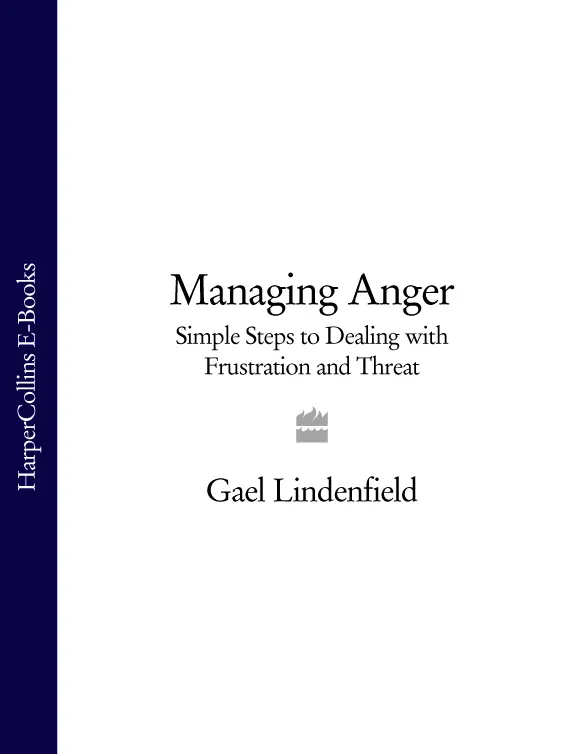
Simple Steps to Dealing with Frustration and Threat
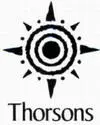
To Stuart, my husband, whose love, courage, honesty and humour have enabled me to take so many strides forward in my struggle to manage my own anger more positively and constructively.
Cover Page
Title Page Managing Anger Simple Steps to Dealing with Frustration and Threat
List of Exercises List of Exercises Please use the search facility on your reading device to locate the exercises My Rights The Price of My ‘Niceness’ Dealing with Irrational Fears Handling Rational Fears Exploring My Darker Side Uncovering Childhood Wounds Identifying Your Inner Child’s Anger Healing Childhood Wounds Unresolved Anger from Adulthood Assertive Anger Scripts Action for Justified Anger Positive Self-talk Self-protection Techniques for Criticism No Excuse Sounding Out My Self-esteem Stress Monitoring My Stress Alert Chart Challenging My Blinkers Improving Communication Skills Analysing My Relationships Management Spot-check
Introduction
ONE Understanding More About Anger
CHAPTER 1 Anger’s Journey from Stimulus to Response
CHAPTER 2 Anger and Our Bodies
CHAPTER 3 Anger and Our Minds
CHAPTER 4 Anger and Our Behaviour
CHAPTER 5 Personal Anger Patterns
TWO Managing Our Own Anger
CHAPTER 6 Step 1: Challenge and Change Your Attitudes
CHAPTER 7 Step 2: Take Control of Your Fears
CHAPTER 8 Step 3: Face the ‘Beast’ Within Yourself
CHAPTER 9 Step 4: Deal with the Backlog of Unresolved Anger
CHAPTER 10 Step 5: Learn to Express Feelings Appropriately and Skilfully
CHAPTER 11 Step 6: Find Constructive Channels for Your Anger Energy
THREE How to Deal with Other People’s Anger
Introduction
CHAPTER 12 Facing an Angry Outburst
CHAPTER 13 In the Wake of the Outburst
CHAPTER 14 Dealing with the Chronic or Repressed Anger of Other People
CHAPTER 15 In the Face of Violence
FOUR Preventative Strategies
Introduction
CHAPTER 16 Strategies for Yourself
CHAPTER 17 Strategies for Others
Further Reading
Index
Acknowledgements
About the author:
Copyright
About the Publisher
Please use the search facility on your reading device to locate the exercises
| My Rights |
| The Price of My ‘Niceness’ |
| Dealing with Irrational Fears |
| Handling Rational Fears |
| Exploring My Darker Side |
| Uncovering Childhood Wounds |
| Identifying Your Inner Child’s Anger |
| Healing Childhood Wounds |
| Unresolved Anger from Adulthood |
| Assertive Anger Scripts |
| Action for Justified Anger |
| Positive Self-talk |
| Self-protection Techniques for Criticism |
| No Excuse |
| Sounding Out My Self-esteem |
| Stress Monitoring |
| My Stress Alert Chart |
| Challenging My Blinkers |
| Improving Communication Skills |
| Analysing My Relationships |
| Management Spot-check |
To most of us, the word ‘anger’ conjures up fearful and unpleasant images. In our minds, this is an emotion we generally associate with scenes of abuse, hurt, violence and destruction. But this dreadful reputation is very unfair to this natural, basic emotion. After all, it is actually designed to be a positive and constructive aid to survival. Its function is to provide us with vital boosts of both physical and emotional energy, just when we are most in need of either protection or healing.
But it is hard to remember the positive nature of anger today. Not only are we bombarded by media stories depicting the awful power of uncontrolled anger, we are also surrounded in our daily life by examples of people desperately trying to pretend that they have risen above this primitive animal emotion. This is not surprising when we consider that most of us were brought up to believe that anger was the response of the unenlightened savage to frustration, threat, violation and loss. As more civilized beings, we were urged, both directly and indirectly, to ‘keep cool’ and ‘turn the other cheek’. Our reward, we were assured, would be a place in heaven – plus fortune, power and happiness in this life as well!
But, many of us, newly empowered with self-awareness and the skills of confidence, are now challenging this myth. We realize that ‘gritting our teeth’ ruins our health, ‘grinning and bearing it’ destroys our relationships, and being ‘too nice’ inhibits our ability both to succeed at work and put right the wrongs of this very unfair world.
However, in making the attempt to reclaim the positive power of anger, I have noticed that disappointment and disillusionment are commonplace. The old habits sometimes seem impossibly hard to break. So, against our better judgement, many of us still find ourselves:
– unable to feel angry, even when we think we should, and so continuing to suffer abuse of our rights
– ‘going over the top’ with rage at the most inappropriate times and places
– taking out our frustration on our nearest or dearest or those least able to defend themselves
– crying when we would prefer to bawl and shout, or at least argue assertively
– rendered speechless and motionless with fury
– getting stuck in a depression when faced with loss instead of becoming angry and healthily completing our grieving
– being too cowardly and passive in the face of other people’s anger and then torturing ourselves with guilt and shame
– unable to control our own anger, even when those who irritate us may be too young, old or sick to handle our outbursts
– haunted by nightmares or daydreams of spiteful and violent revenge
– running to the doctor with headaches, ulcers and hypertension caused by holding in tight the steam boiling within us.
If the bells of recognition have started ringing, this is certainly the book for you!
Why I Have Written This Book
You may be comforted to know that I have a very personal interest in this subject because I am still struggling myself! I certainly don’t pretend to have completely mastered the art of managing anger well, though I know that am getting more and more skilful as the days go by.
In common with very many people I know, I was never taught the art of handling anger as a child – even though the adults around me knew that, because of neglect and injustice, I had plenty of reason to feel more than my fair share of it. So I found myself naturally locking my feelings defensively within myself. On the outside, I became predominantly ‘sweetness and light’, and as I grew up, I graduated from being a schoolgirl collector of ‘Good Conduct’ badges to an enthusiastic but basically cynical do-gooder. Then in my mid-twenties, a serious attempt to take my own life led me to the world of therapy, which mercifully released me from my depression by giving me the permission and space to feel angry.
But, with hindsight, I can see that this therapy was not enough. I needed guidance on how to handle this hitherto alien emotion. It is true that I was able to find some constructive outlets. I used my angry energy to battle on behalf of forgotten clients in the field of mental health but, more often than not, I displayed and vented my anger aggressively. I often obtained the results which I was seeking, but, needless to say, I found that both my personal and professional relationships suffered under the strain.
Читать дальше
